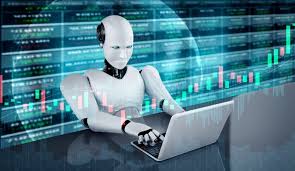
Introduction:
In the dynamic world of financial markets, forex trading stands out as one of the most lucrative yet challenging endeavors. The foreign exchange market, or forex, witnesses trillions of dollars in transactions daily, driven by a myriad of forex robot from geopolitical events to economic indicators. Amidst this complexity, traders are constantly seeking tools to enhance their efficiency and profitability. One such innovation that has gained prominence in recent years is the forex robot.
What is a Forex Robot?
A forex robot, also known as an expert advisor (EA), is a software program designed to automate trading decisions in the forex market. These robots are based on pre-defined algorithms and trading strategies, allowing them to analyze market conditions and execute trades without human intervention. Forex robots operate on trading platforms such as MetaTrader, utilizing programming languages like MQL (MetaQuotes Language) to execute trades according to specific parameters.
How Forex Robots Work:
Forex robots function by processing vast amounts of market data in real-time and applying predetermined rules to identify trading opportunities. These rules can encompass technical indicators, price patterns, and risk management parameters. Once a potential trade setup is identified, the robot can automatically execute buy or sell orders based on the specified criteria.
The Advantages of Forex Robots:
- Emotion-Free Trading: One of the primary advantages of forex robots is their ability to eliminate emotional biases from trading decisions. Fear and greed, common pitfalls for human traders, often lead to irrational behavior and suboptimal outcomes. Robots operate solely on predefined algorithms, ensuring disciplined and consistent execution of trades.
- 24/7 Market Monitoring: Unlike human traders who need rest, forex robots can operate continuously, monitoring the market around the clock. This capability allows them to capitalize on trading opportunities that may arise during non-trading hours or in different time zones, providing a significant advantage in a global market like forex.
- Backtesting and Optimization: Forex robots can be backtested using historical data to assess their performance under various market conditions. Traders can optimize the robot’s parameters to enhance its profitability and risk management capabilities. This iterative process enables traders to refine their strategies and adapt to changing market dynamics effectively.
- Speed and Efficiency: With the ability to execute trades within milliseconds, forex robots capitalize on fleeting opportunities in the market with precision and efficiency. Human traders may struggle to match the speed and accuracy of automated systems, particularly in fast-paced markets or during news events.
The Challenges and Risks:
While forex robots offer several advantages, they are not without challenges and risks:
- Over-Optimization: Excessive optimization of forex robots based on historical data can lead to overfitting, where the robot performs well in past conditions but fails to adapt to new market environments. Traders must strike a balance between optimizing performance and maintaining robustness.
- Market Volatility: Sudden shifts in market conditions, such as high volatility or unexpected news events, can challenge the effectiveness of forex robots. While some robots are designed to adapt to volatile conditions, extreme market fluctuations can still result in losses.
- Technical Failures: Like any software-based system, forex robots are susceptible to technical glitches or malfunctions. Internet connectivity issues, server outages, or software bugs can disrupt trading operations and potentially lead to financial losses.
- Lack of Adaptability: While forex robots excel in executing predefined strategies, they may struggle to adapt to unanticipated market developments or unconventional scenarios. Human traders possess the intuition and flexibility to adjust their approach in response to changing conditions, which robots may lack.
Conclusion:
Forex robots represent a powerful tool for traders seeking to automate their trading processes and enhance efficiency in the forex market. By leveraging advanced algorithms and real-time data analysis, these automated systems offer advantages such as emotion-free trading, 24/7 market monitoring, and speed of execution. However, traders must remain vigilant of the challenges and risks associated with forex robots, including over-optimization, market volatility, technical failures, and lack of adaptability. Ultimately, successful utilization of forex robots requires a balanced approach that combines technological innovation with human expertise and discretion.